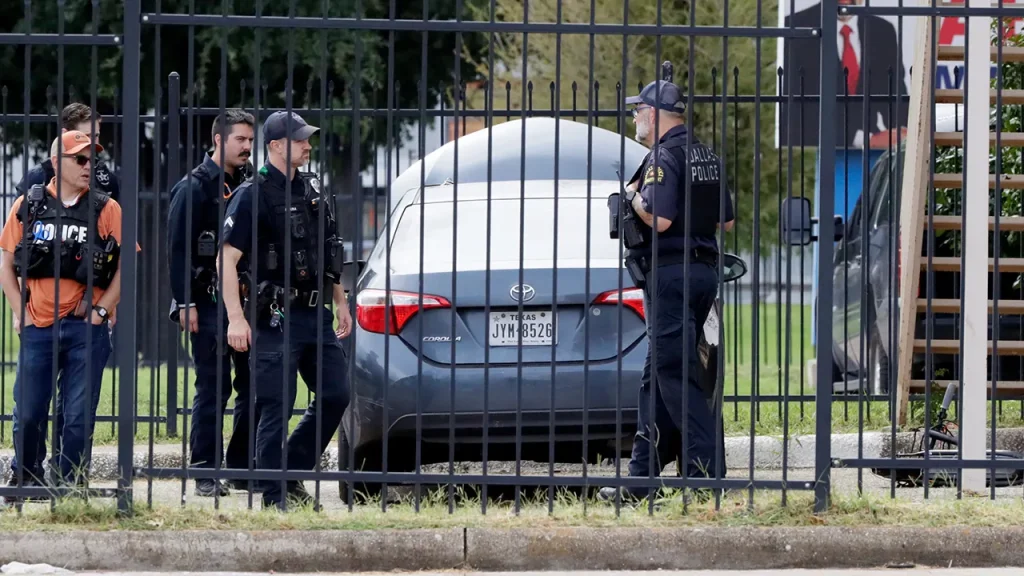Tragedy Strikes Dallas ICE Facility: Understanding the Human Cost of Violence
In a shocking incident that has sent ripples through communities across the nation, a deadly shooting occurred at the Dallas Immigration and Customs Enforcement (ICE) field office on Wednesday. Among those who lost their lives was 37-year-old Norlan Guzman-Fuentes, an immigrant from El Salvador who was in custody at the time of the attack. This tragedy represents not just a security breach at a federal facility, but a deeply human story with real victims caught in the crossfire of what appears to be a targeted act of violence against immigration officials.
Guzman-Fuentes’ story, like many immigrants, was complex. While authorities noted that the exact circumstances of his entry into the United States remain unclear, his presence in the system dated back to at least 2012, when he faced charges in Palm Beach County, Florida. His record showed a series of encounters with law enforcement over the years, including a 2020 arrest for driving while intoxicated in Arlington, Texas, after which he was released on bond before ICE could place a detainer. Most recently, he had been arrested by Dallas Police on August 25 for alleged aggravated assault with a deadly weapon, though this charge was later dismissed on September 10. It was following this dismissal that Enforcement and Removal Operations (ERO) Dallas took him into custody on September 24, in accordance with an immigration detainer—the very day the shooting occurred.
The attack itself appears to have been meticulously planned with devastating intent. The suspect, identified as 29-year-old Joshua Jahn, reportedly sought to “incite terror by killing federal agents,” according to officials familiar with the investigation. Armed with a sniper rifle, Jahn opened fire on the facility in what authorities are characterizing as a deliberate assault on immigration officials. The violence claimed not only Guzman-Fuentes’ life but left two others critically wounded before Jahn fatally shot himself. In a small mercy amidst the horror, no ICE personnel were physically harmed during the attack, though the psychological impact on those who witnessed or were targeted in the shooting will undoubtedly be long-lasting.
This incident doesn’t exist in isolation but rather represents the latest in what experts describe as a growing pattern of violence directed at immigration authorities and facilities. The attack has prompted heightened security measures at ICE facilities nationwide, as federal officials grapple with what they termed a “truly disturbing” escalation. The targeting of a federal immigration facility raises profound questions about the increasingly volatile rhetoric surrounding immigration policy in America, and how such discourse might fuel extremist actions. It forces us to confront uncomfortable realities about how political debates can sometimes spiral into real-world violence with tragic human consequences.
Behind the headlines and political implications lies the human dimension of this story. Guzman-Fuentes, regardless of his immigration status or past encounters with law enforcement, was a person whose life was suddenly and violently cut short. He may have had family members waiting to hear from him, friends who will mourn his absence, and dreams that will now go unfulfilled. The other victims, whose names have not been released but who remain in critical condition, face uncertain futures as they fight to recover from their injuries. The ripple effects of violence extend far beyond the immediate victims, touching the lives of everyone connected to them and creating trauma that can persist for generations.
As communities attempt to process this tragedy, it serves as a stark reminder of the human cost when political tensions escalate to violence. Immigration policy will continue to be debated in the halls of government and across dinner tables nationwide, but this incident underscores the vital importance of ensuring such debates remain within the bounds of peaceful discourse. The security measures being implemented at ICE facilities may help prevent future attacks, but addressing the root causes of such violence requires a deeper examination of how we discuss contentious issues as a society. Whether this tragic event will serve as a catalyst for more thoughtful engagement on immigration matters or become another footnote in an increasingly polarized landscape remains to be seen, but the lives affected—from Guzman-Fuentes to the wounded victims, from the ICE personnel who were targeted to the communities shaken by this violence—remind us of what’s truly at stake when politics transforms into bloodshed.











